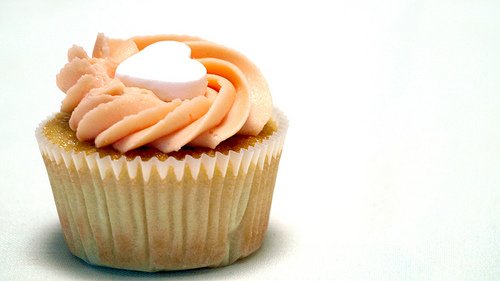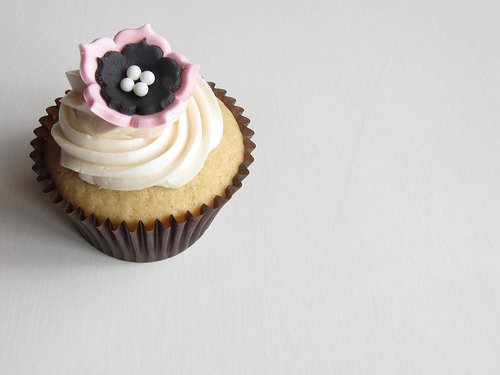Baking with buttercream? Buttercream made from scratch involves endless whisking so you have to make the most out of the frosting to maximize your effort. What if you have a lot of leftover frosting? Can you freeze buttercream frosting? Excess buttercream is quite common and it is great to know that frosting does freeze well!
It is worth noting, however, that buttercream comes in 5 types. Some of these types of buttercream freeze well better than others. In addition, the five different types of buttercream are prepared in two different ways!
5 Types of Buttercream
American Buttercream
American buttercream has a fluffy and creamy consistency. It is usually pale yellow in color and is a little firmer than most types of buttercreams. Making the buttercream does not require cooking, just a lengthy beating.
French Buttercream
French buttercream has a velvety, rich flavor and a bright yellow hue thanks to the egg-yolk foam. This type of buttercream is the most difficult to make because it requires cooking hot sugar syrup and mixing it into the beaten yolks. You have to keep the mixer running while incorporating the sugar syrup because the heat could cause the egg yolks to scramble! This buttercream doesn’t hold well in warm temperature.
Italian Buttercream
Italian buttercream is made with Italian meringue, which explains its pale yellow or almost white coloring. This buttercream holds up well in warm temperature. making Italian buttercream requires cooking and it involves drizzling hot sugar syrup over an egg foam made only of egg whites.
Swiss Buttercream
Swiss buttercream is a light and fluffy frosting with a glossy finish. This buttercream is made with Swiss meringue. This is one of the easiest buttercreams to make because you don’t have to pour the hot sugar syrup over an egg-based foam.
German Buttercream
German buttercream is a custard-based buttercream with a smooth, rich consistency and a deep yellow color. This buttercream type is usually lighter than American buttercream but you can add more of the custard base for a thicker consistency.

Buttercream Cooking Methods
There are two ways of making buttercream from scratch:
Made with Sweet Base: This preparation involves adding a sweet base, such as custard or pudding, to beaten butter.
Buttercream with Egg Foam Base: This preparation is made by combining cubes of softened butter to an egg foam base or meringue.
The five different types of buttercream can be divided into two cooking methods. American and German buttercreams are made using a sweet base. French, Italian, and Swiss buttercreams are made using an egg foam base.
How to Freeze Buttercream Frosting
Freezing excess buttercream frosting is so easy. Just scoop the buttercream into a resealable plastic bag and squeeze out as much air as you can before sealing. Seal, write the storage date then stick in the freezer. Place the buttercream in the coldest spot in your freezer to extend its shelf life.
Do note that freshly made buttercream freezes better than buttercream that’s been left sitting too long at room temperature or in the fridge.
General Buttercream Guidelines
Room Temperature Ingredients
When making the buttercream frosting, always use room temperature ingredients (eggs and butter). This will minimize the risk of separation between ingredients, especially if you are freezing the excess buttercream. By using room temperature ingredients, the buttercream will also come out smoother and hold its texture longer.
Watch the Butter Softness
You have to soften the butter to make the buttercream. However, the softness has to be just right. If the butter is too soft, the consistency of the buttercream will become grainy due to curdling once mixed using the mixer. To achieve the perfect softness, the butter should be melty but not overly greasy. If the surface of the butter has turned oily, it’s too soft. The butter should break off easily into pieces once tossed in the mixer.
Preventing Curdling
Sometimes the buttercream would develop a curdled texture even when you did everything right. This is normal and easily corrected by vigorous mixing. Do not stop when you see the separation between the ingredients; continue mixing until the buttercream is smooth and velvety.

Choosing the Right Sugar
Yes, the kind of sugar you use for the buttercream could affect the frosting’s consistency! Generally, use powdered or confectioner’s sugar when making American buttercream. Powdered sugar dissolves easily into the butter for a smooth, velvety buttercream frosting. When making European buttercream frosting, use sugar syrup made from granulated sugar to achieve the right consistency. Add the sugar slowly to retain the buttercream frosting’s smooth consistency.
Reconstituting Breaking Buttercream Frosting
If for some reason your buttercream frosting breaks as you beat vigorously, there is a way to restore its consistency. Just put the frosting in the fridge and leave it to harden a bit. Then, take the frosting out of the fridge, beat it again using the mixer on high until the buttercream emulsifies. As you beat, continue adding butter gradually. If the buttercream frosting breaks beyond salvation, coat the frosting with crushed nuts after spreading on the cake.
Shelf Life, Thawing and Reheating Suggestions
When kept in the freezer, buttercream frosting will keep fresh for up to 3 months. Thawing the buttercream frosting should be nice and slow. Start by transferring the frozen buttercream frosting in the fridge and leave it to soften overnight.
When you’re ready to frost the cake, take the buttercream frosting out of the fridge and bring it to room temperature. Then, re-whip the buttercream frosting until light and fluffy. Beating still-cold buttercream frosting will result in a grainy, curdled consistency.
If for some reason the buttercream frosting remains grainy, let the frosting sit out for a little bit longer then whip again. To thicken the buttercream frosting, add a tablespoon or two of powdered.
Summary
Making buttercream frosting from scratch is by no means an easy feat but there’s just something about frosting that makes any type of baked goods look and taste even better. Can you freeze buttercream frosting? The good news is, buttercream frosting can be made ahead and frozen for later. As long as you keep these tips in mind, you can make the frosting in advance!